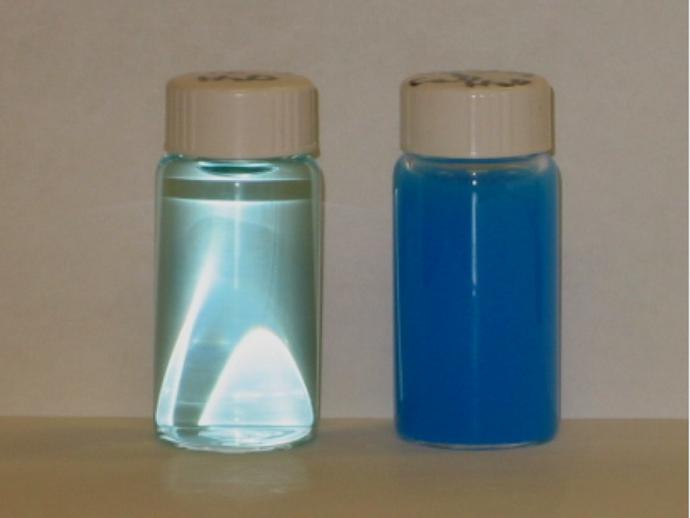Randy Holmes-Farley
Reef Chemist
View Badges
Staff member
Super Moderator
Excellence Award
Expert Contributor
Article Contributor
R2R Research
My Tank Thread
- Joined
- Sep 5, 2014
- Messages
- 67,146
- Reaction score
- 63,497
Follow along with the video below to see how to install our site as a web app on your home screen.
Note: This feature may not be available in some browsers.

I tried to dissolve 1/2 g vanadium pentoxide in 250 mL water (half strength). I shook the daylights out of it but there were still some solids. so I added some calcium hydroxide and now I have over 1/4" of light orange fluffy sediment. No way would the amount of calcium hydroxide I added equal that volume. Also, the water is now almost clear.You're welcome.
Let us know if you hit any snags.

No way would the amount of calcium hydroxide I added equal that volume.



My orange vanadium solution cleared up just like the blue copper solution did from the linked article.
Since I don't have any sodium hydroxide, maybe I'll see if I can get 1/4 g vanadium pentoxide to dissolve in 250 mL water.
Will temperature affect solubility?
Would kalkwasser likely not be an issue assuming no solids are in it?

I decided to use sodium hydroxide after all. Can I add small amounts of dry sodium hydroxide until the vanadium pentoxide dissolves?
I'd like 1/2g vanadium pentoxide dissolved in 250mL water to be my working solution. If I only added just enough sodium hydroxide to dissolve the vanadium do you think I could store it in a glass bottle?


It turned out beautiful! A nice looking yellowish with not a hint of cloudiness.
I used the tiny scoop from a Salifert test kit, I only needed 7 scoops of lye to dissolve 1/2g vanadium pentoxide in 250 mL water.
Thanks a ton!
